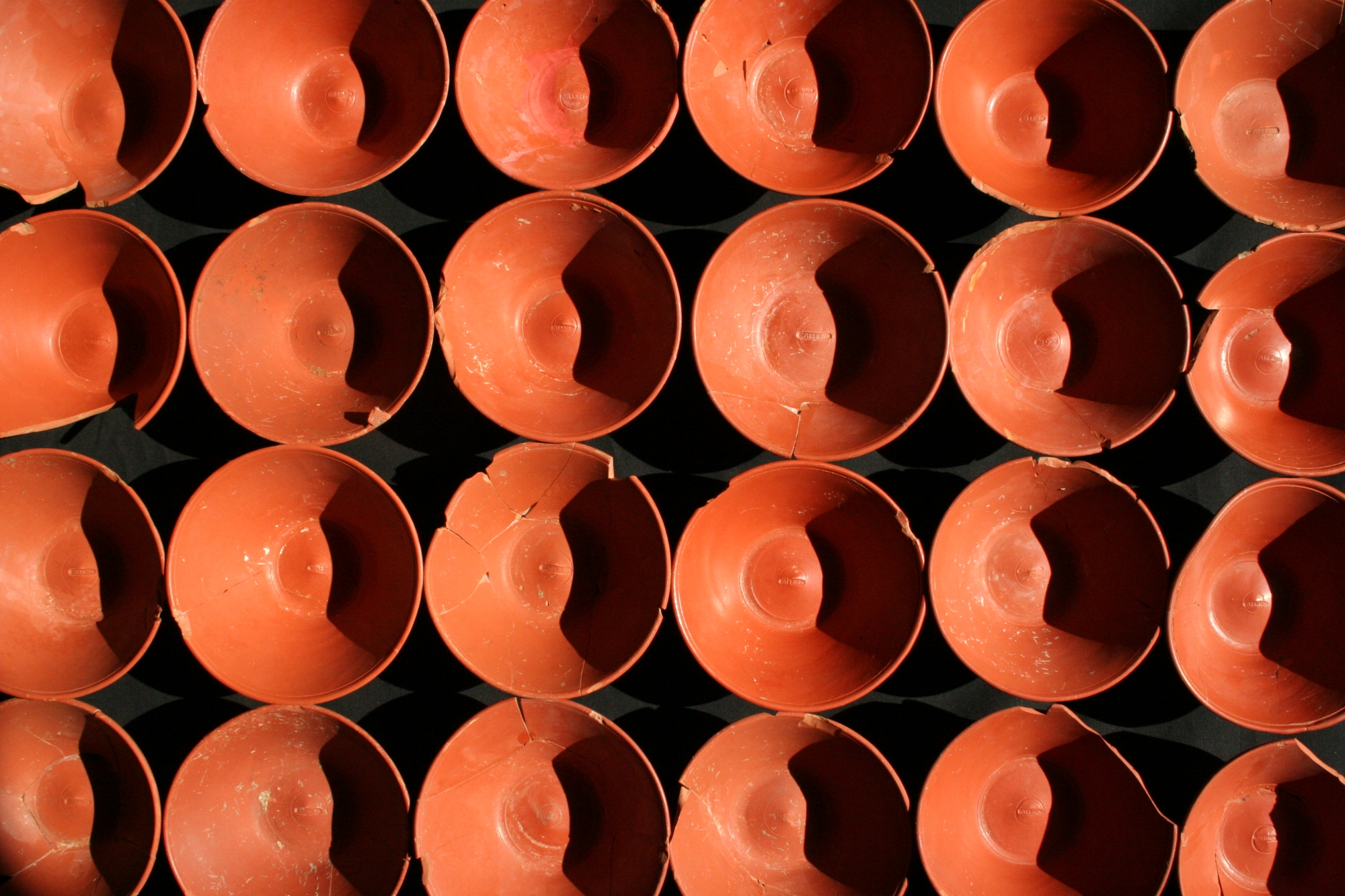 DRAG.33 Gallicannus - Série de Drahendorff 33 - Ier - IIe siècle
DRAG.33 Gallicannus - Série de Drahendorff 33 - Ier - IIe siècle© François Leyge
IN Exhibition
2,000 years of design, Gallo-Roman glass and design
Musée de Saint-Romain-en-Gal-Vienne
Ceramic, once fired correctly, is a particularly strong and stable material. It has only one fault, its fragility, hence a limited service life and the need to regularly replace dishes and kitchen utensils. However, this fragility is all to the advantage of the archaeologist: due to a certain standardisation of shapes, the potsherds found in abundance in archaeological digs constitute precious guides to the age of finds. It is possible to identify types and subtypes that are characteristic of a given period in a given geographical area. The potter copies pre-existing forms, perfects them and personalises them to create new variants that he is capable of reproducing in large quantities. So mass production goes back a lot further than you might have thought!
Two thousand years on, what does the ceramic production of Antiquity tell us about how we have changed? The issues were already there: the desire to create forms that take account of a mode of mass production. Today, the contemporary designer must integrate revolutionary technological innovations and meet a demand for production that can grow infinitely, while proposing new, aesthetically pleasing forms suited to industrial scale production.
Two thousand years on, what does the ceramic production of Antiquity tell us about how we have changed? The issues were already there: the desire to create forms that take account of a mode of mass production. Today, the contemporary designer must integrate revolutionary technological innovations and meet a demand for production that can grow infinitely, while proposing new, aesthetically pleasing forms suited to industrial scale production.








